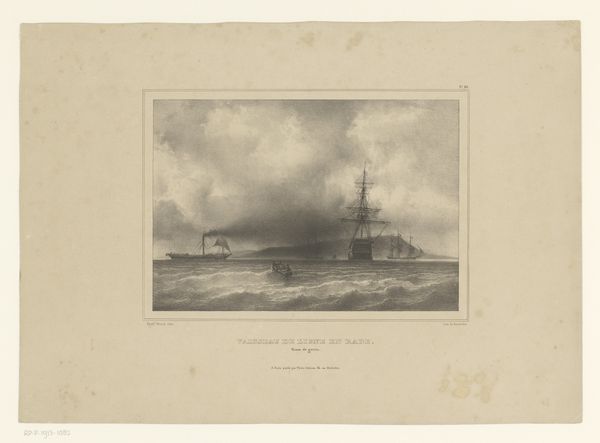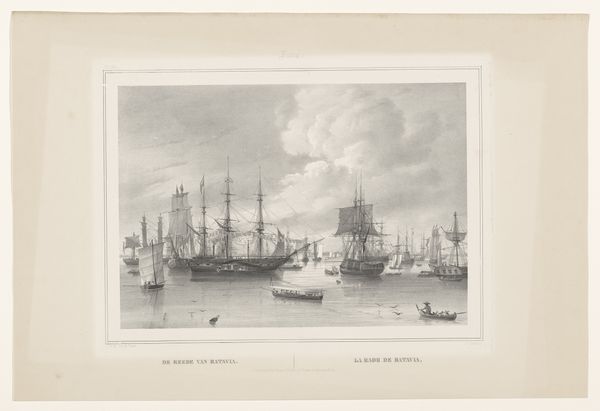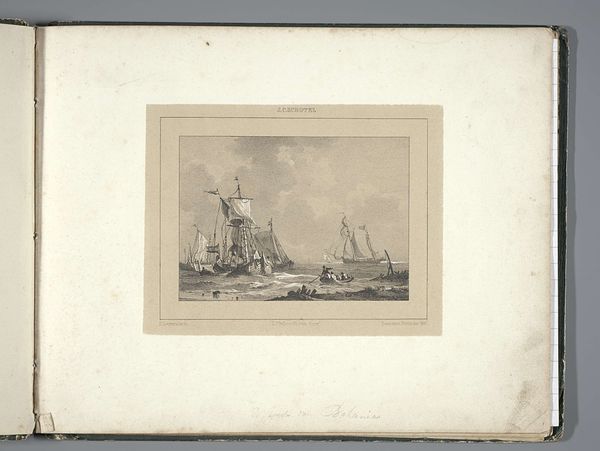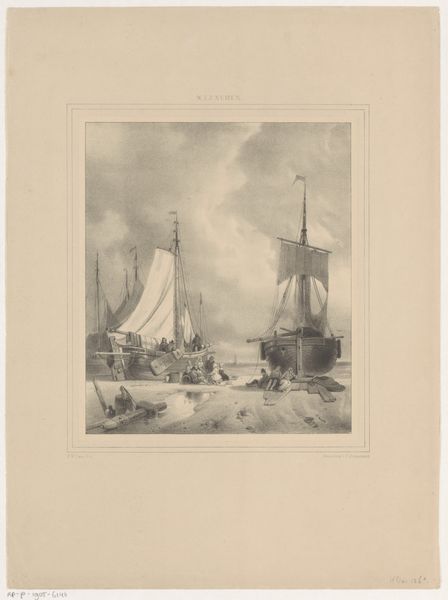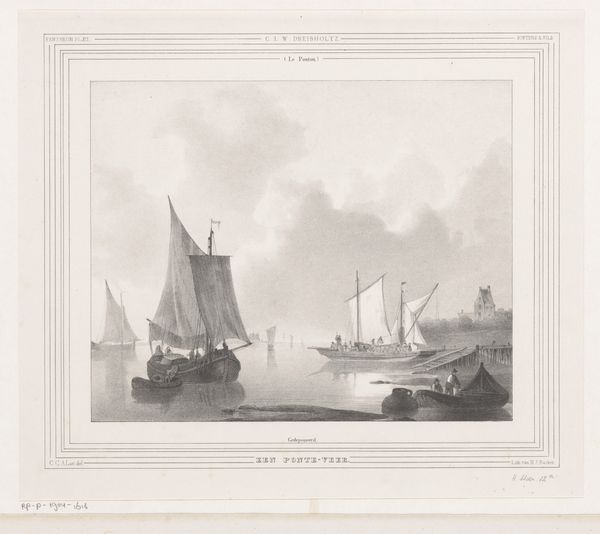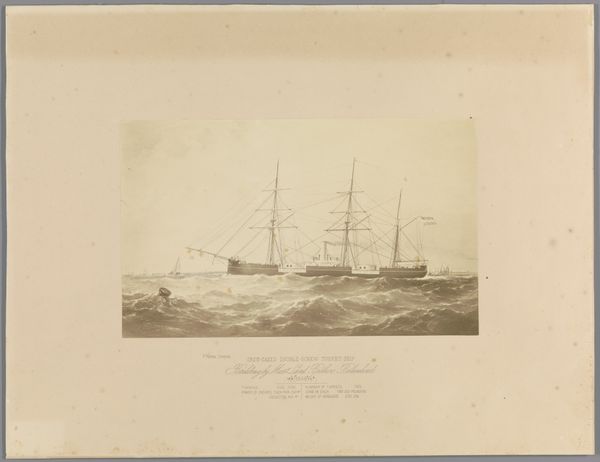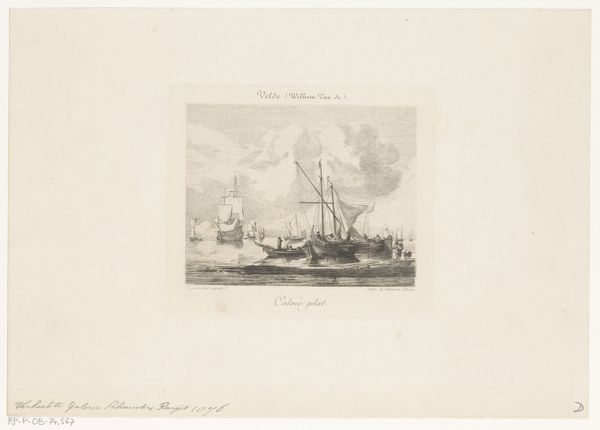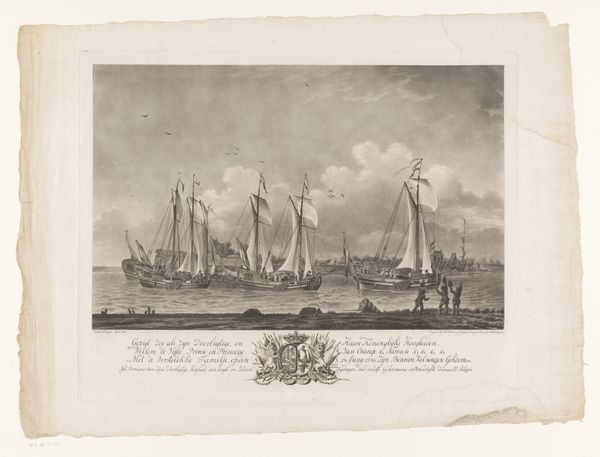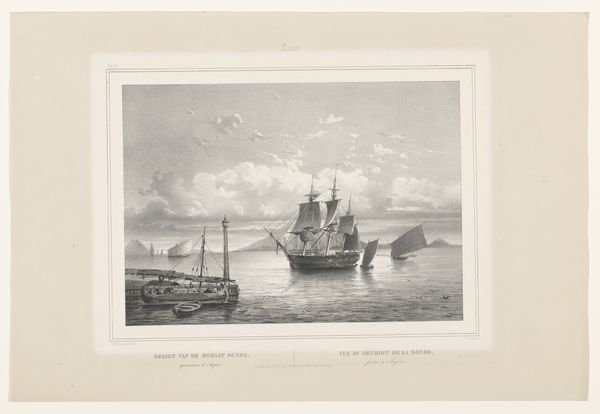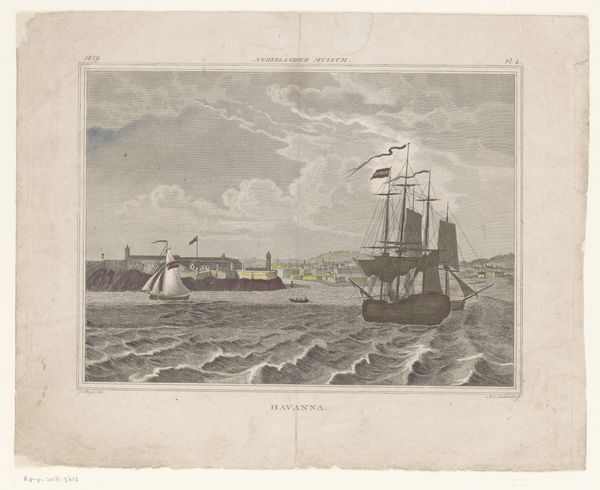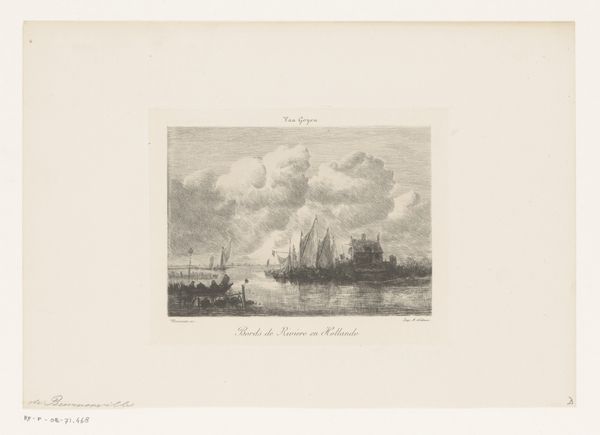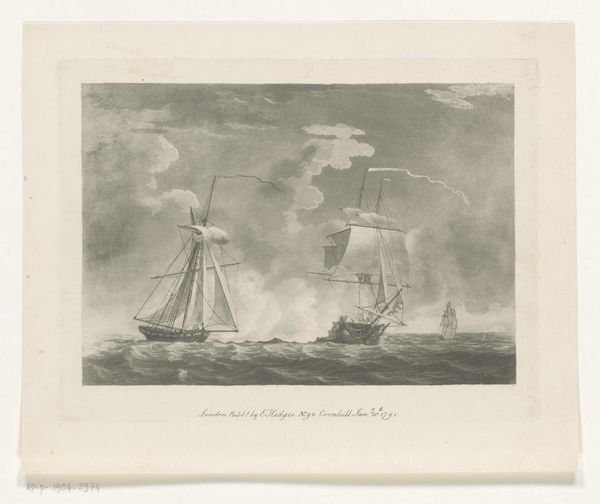
lithograph, print
#
dutch-golden-age
#
lithograph
# print
#
landscape
#
romanticism
#
cityscape
#
realism
Dimensions: height 261 mm, width 324 mm
Copyright: Rijks Museum: Open Domain
Editor: Here we have Cornelis Gerrit Verburgh's lithograph, "Gezicht op Rotterdam," created sometime between 1839 and 1847. It's quite striking. The atmospheric perspective makes the city feel vast, and the ships give it a real sense of bustling activity. What do you see in this piece? Curator: The first thing that grabs my attention is the careful rendering of the clouds, looming large, and mirroring the industrialization represented by the steamboats on the water. Note also the frame--very decorative! Think about what that framing device signifies--do you see a contrast between that romanticism and the budding industry within? Editor: I hadn’t considered that contrast, but it’s so obvious now! The ships pulling into port – are they symbolic of trade, or something else? Curator: Both trade and transition, certainly. Ships, since antiquity, carry potent symbolic weight, evoking journeys, connections between worlds, and of course, commerce. Notice how the people on the shore are small in scale. The rise of industry dwarfed individual experience, creating an anxiety about place in the world. The ornate frame also reinforces this concept of separation. Editor: That's fascinating. The size of the figures does now strike me, yes! Are you suggesting the artist is making some kind of statement, or simply representing society at that time? Curator: The choice to represent that transition at all *is* a statement, even if subtle. There’s nostalgia implied in the delicate framing of that imagery, coupled with an awareness of a quickly changing world. The ships point to broader European industrialization and trade networks that were deeply enmeshed with Rotterdam itself. Consider also, how Verburgh positions the viewer: separated from this "new" Rotterdam, almost longingly looking at a world they may or may not be a part of. Editor: That gives me a totally new way to approach this piece, considering the emotional complexities involved in industrial change! Curator: Absolutely. Visual symbols allow us to contemplate, reconsider, and remember what our places mean to us, as individuals and as communities.
Comments
No comments
Be the first to comment and join the conversation on the ultimate creative platform.

